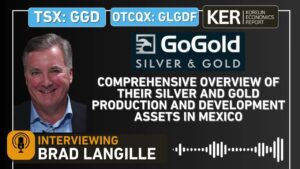COEUR D'ALENE, Idaho–(BUSINESS WIRE)– Hecla Mining Company (NYSE:HL) (Hecla or the Company) today announced first quarter net loss applicable to common stockholders of $0.8 million, or $0.00 per basic share, and adjusted net income applicable to common stockholders of $7.2 million, or $0.02 per basic share.1
FIRST QUARTER 2016 HIGHLIGHTS AND SIGNIFICANT ITEMS (compared to Q1 2015)
- Sales of $131.0 million, up 10% on higher production despite lower prices.
- Operating cash flow of $18.7 million, down slightly on lower prices and accounts receivable increase.
- Adjusted EBITDA of $46.5 million, a 33% increase to highest level in three years.2
- Record silver production of 4.6 million ounces at a cash cost, after by-product credits, per silver ounce of $3.16.3
- Total gold production of 55,688 ounces, of which 30,378 ounces were produced at Casa Berardi at a cash cost, after by-product credits, per gold ounce of $781.3
- Record silver equivalent production of 12.0 million ounces.4
- Cash and cash equivalents of $134 million despite $20 million increase in working capital from the San Sebastian startup and accounts receivable increase.
- Increased 2016 silver production expectation to 15.0 million ounces (from 13.5 to 14.0 million) at a cash cost, after by-product credits, of $5.00 per ounce (from $6.00 an ounce).
"Consistent with our strategy to grow despite price weakness, the first quarter production was the highest in our 500 quarter history," said Phillips S. Baker, Jr., Hecla's President and CEO. "Our focus on high return growth like we have at San Sebastian gives Hecla leverage to increasing silver prices. And Casa Berardi's growing production from the East Mine Crown Pillar pit should do the same for gold."
| (1) | Adjusted net income (loss) applicable to common stockholders represents a non-U.S. Generally Accepted Accounting Principles (GAAP) measure, a reconciliation of which to net (loss) income applicable to common stockholders, the most comparable GAAP measure, can be found at the end of the release. | ||
| (2) | Adjusted EBITDA is a non-GAAP measure, a reconciliation of which to net (loss) income, the most comparable GAAP measure, can be found at the end of the release. | ||
| (3) | Cash cost, after by-product credits, per silver and gold ounce represents a non-GAAP measure, a reconciliation of which to cost of sales and other direct production costs and depreciation, depletion and amortization, the most comparable GAAP measure, can be found at the end of the release. | ||
| (4) | Silver equivalent calculations based on the following prices: $14.84 for Ag, $1,181 for Au, $0.79 for Pb, and $0.76 for Zn. | ||
FINANCIAL OVERVIEW
| (in thousands, except per share amounts) | First Quarter Ended | ||||||||
| HIGHLIGHTS | March 31, 2016 | March 31, 2015 | |||||||
| FINANCIAL DATA | |||||||||
| Sales | $ | 131,017 | $ | 119,092 | |||||
| Gross profit | $ | 30,822 | $ | 19,873 | |||||
| (Loss) income applicable to common stockholders | $ | (756 | ) | $ | 12,414 | ||||
| Basic (loss) income per common share | $ | — | $ | 0.03 | |||||
| Diluted (loss) income per common share | $ | — | $ | 0.03 | |||||
| Net (loss) income | $ | (618 | ) | $ | 12,552 | ||||
| Cash provided by operating activities | $ | 18,748 | $ | 21,419 | |||||
| Capital expenditures (excluding capitalized interest) | $ | 34,743 | $ | 27,907 | |||||
| Cash and cash equivalents as of quarter end | $ | 134,018 | $ | 196,231 | |||||
Net (loss) income applicable to common stockholders for the first quarter decreased $13.2 million to a loss of $0.8 million, or $0.00 per share, from the same period a year ago and was impacted by the following factors:
- Sales were 10% higher on increased silver production, partially offset by lower metal prices.
- Net foreign exchange loss of $8.2 million compared to a gain of $12.3 million in the same period of 2015 due primarily to the impact of a strengthening Canadian dollar (CAD) on deferred tax liabilities.
- Limited metal derivative contract activity in the first quarter of 2016 compared to a gain of $5.8 million in the first quarter of 2015.
- Impairment loss of $1.0 million in the first quarter of 2016 compared to a loss of $2.8 million in the same period of 2015 for investments in exploration companies.
Operating cash flow of $18.7 million declined 12% over the same period in 2015 principally due to higher working capital, which is expected to normalize throughout the year. The adjusted EBITDA of $46.5 million increased 33% over the same period in 2015 due to the operational improvements, the San Sebastian startup, and the weaker CAD compared to the USD. The Company expects 2016 capital spending to total $150 million, unchanged from previous estimates.
Capital expenditures (excluding capitalized interest) totaled $34.7 million. Expenditures at Greens Creek, Casa Berardi, Lucky Friday and San Sebastian were $6.4 million, $15.6 million, $12.3 million, and $0.5 million, respectively.
Metals Prices
Average realized silver prices in the first quarter of 2016 were $14.93 per ounce, 13% lower than the $17.18 price realized in the first quarter of 2015. Realized gold, lead and zinc prices also declined 3%, 8%, and 16%, respectively.
| First Quarter Ended | ||||||||||
| March 31, 2016 | March 31, 2015 | |||||||||
| AVERAGE METAL PRICES | ||||||||||
| Silver – | London PM Fix ($/oz) | $ | 14.84 | $ | 16.72 | |||||
| Realized price per ounce | $ | 14.93 | $ | 17.18 | ||||||
| Gold – | London PM Fix ($/oz) | $ | 1,181 | $ | 1,219 | |||||
| Realized price per ounce | $ | 1,187 | $ | 1,222 | ||||||
| Lead – | LME Cash ($/pound) | $ | 0.79 | $ | 0.82 | |||||
| Realized price per pound | $ | 0.78 | $ | 0.85 | ||||||
| Zinc – | LME Cash ($/pound) | $ | 0.76 | $ | 0.94 | |||||
| Realized price per pound | $ | 0.79 | $ | 0.94 | ||||||
Base Metals Forward Sales Contracts
The following table summarizes the quantities of base metals committed under financially settled forward sales contracts at March 31, 2016:
| Pounds Under Contract | ||||||||||||||
| (in thousands) | Average Price per Pound | |||||||||||||
| Zinc | Lead | Zinc | Lead | |||||||||||
| Contracts on provisional sales | ||||||||||||||
| 2016 settlements | 15,818 | 9,700 | $ | 0.80 | $ | 0.77 | ||||||||
The contracts represent minimal amounts of forecasted lead and zinc production as most contracts were successfully liquidated in 2015.
OPERATIONS OVERVIEW
The following table provides the production and cash cost, after by-product credits, per silver and gold ounce summary for the quarters ended March 31, 2016 and 2015:
| First Quarter Ended | First Quarter Ended | ||||||||||||||
| March 31, 2016 | March 31, 2015 | ||||||||||||||
Production | Increase/ | Cash costs, after | Production | Cash costs, after | |||||||||||
| Silver | 4,642,704 | 61% | $3.16 | 2,878,597 | $4.93 | ||||||||||
| Gold | 55,688 | 37% | $781 | 40,650 | $974 | ||||||||||
| Greens Creek | |||||||||||||||
| Silver | 2,458,276 | 21% | $3.96 | 2,035,966 | $3.23 | ||||||||||
| Gold | 15,981 | 5% | N/A | 15,239 | N/A | ||||||||||
| Lucky Friday | 977,084 | 17% | $9.05 | 836,719 | $9.05 | ||||||||||
| Casa Berardi | |||||||||||||||
| Gold | 30,378 | 20% | $781 | 25,411 | $974 | ||||||||||
| Silver | 7,005 | 18% | N/A | 5,912 | N/A | ||||||||||
| San Sebastian | |||||||||||||||
| Silver | 1,200,339 | N/A | ($3.26) | N/A | N/A | ||||||||||
| Gold | 9,329 | N/A | N/A | N/A | N/A | ||||||||||
| (1) | Cash cost, after by-product credits, per silver or gold ounce represent a non-GAAP measure, a reconciliation of which to cost of sales and other direct production costs and depreciation, depletion and amortization, the most comparable GAAP measure, can be found at the end of the release. | ||
| (2) | Cash cost, after by-product credits, per gold ounce is only applicable to Casa Berardi production. Gold produced from Greens Creek and San Sebastian is used as a by-product credit against the silver cash cost. | ||
The following table provides the production summary on a consolidated basis for the quarters ended March 31, 2016 and 2015:
| First Quarter Ended | ||||||||
| March 31, 2016 | March 31, 2015 | |||||||
| PRODUCTION SUMMARY | ||||||||
| Silver – | Ounces produced | 4,642,704 | 2,878,597 | |||||
| Payable ounces sold | 3,795,815 | 2,926,535 | ||||||
| Gold – | Ounces produced | 55,688 | 40,650 | |||||
| Payable ounces sold | 46,260 | 39,795 | ||||||
| Lead – | Tons produced | 11,038 | 9,878 | |||||
| Payable tons sold | 8,750 | 8,625 | ||||||
| Zinc – | Tons produced | 17,364 | 16,087 | |||||
| Payable tons sold | 14,342 | 11,143 | ||||||
Greens Creek Mine – Alaska
Silver production increased 21% and gold production increased 5% over the prior year period. Higher throughput and recoveries contributed to increased silver and gold production, with silver additionally benefiting from grades that were about 1.4 oz/ton higher than expected and which are likely to moderate as the year progresses. The mill operated at 2,252 tons per day (tpd) during the first quarter of 2016.
The cash cost, after by-product credits, per silver ounce increased to $3.96 from $3.23 in the first quarter 2015 due to a $4.29 per ounce decline in by-product revenues as a result of lower gold, zinc and lead prices, partially offset by the impact of higher silver production.
Lucky Friday Mine – Idaho
Silver production increased 17% over the prior year period due to higher silver grades and recoveries. The mill operated at 813 tpd during the first quarter of 2016.
The cash cost, after by-product credits, per silver ounce of $9.05 was unchanged over the prior year period despite a $0.55 per ounce decrease in by-product revenues.
#4 Shaft, a key growth project, has been excavated to its final depth of 8,600 feet and is expected to be operational in the fourth quarter. The total estimated completion cost of the #4 Shaft is approximately $225 million, with $214.7 million spent through the first quarter. Remaining work includes equipping the shaft with steel sets, guides, skip loading facilities and electrical infrastructure. Once operational, work will begin on the lateral development necessary to provide access to higher-grade material.
As of March 31, 2016, the #4 Shaft team has worked 1,596 days without a lost-time accident.
Casa Berardi Mine – Quebec
Gold production increased 20% over the prior year period due to higher throughput. The mill operated at an average of 2,384 tpd during the first quarter of 2016.
The cash cost, after by-product credits, per gold ounce of $781 decreased from $974 in the prior year period due to higher gold production and a weaker CAD. The mining cost per ton was the lowest since the mine was acquired in 2013.
Stripping is well underway on the East Mine Crown Pillar project and the pits are expected to contribute 5,000 ounces of gold in 2016 and 30,000 ounces of gold for each of the remaining years of the project.
San Sebastian – Mexico
Silver production at San Sebastian was 1,200,339 ounces at a cash cost, after by-product credits, of negative $3.26 per silver ounce in what was the first full quarter of production since reopening. The strong cash cost performance was due to the production of 9,329 ounces of gold, which is used as a by-product credit. Production of silver and gold was strong in the first quarter, particularly in March, due to the prevalence of high-grade material from the East Francine pit. At quarter end, there were approximately 320,000 silver ounces in inventory. The inventory included metal in the mine refinery and metal in-transit to third-party refiners. The Company intends to sell principally doré and occasionally precipitate, when metal loading is high, over the remainder of the year. The mill operated at an average of 342 tpd in the first quarter of 2016.
EXPLORATION AND PRE-DEVELOPMENT REVIEW
Expenditures
Exploration and pre-development expenses were $3.0 million and $0.4 million, respectively, a decrease of about $1.7 million and $0.1 million, respectively, versus the first quarter of 2015 as a result of reduced discretionary spending. Full year exploration and pre-development expenses (including corporate development) are expected to be about $15.0 million combined.
The Company’s exploration efforts are focused on the continued discovery of high-grade deposits near its existing operations. As a result, the level of reserves have shown a remarkable resilience over the last ten years despite changes in commodity prices; production has been replaced and reserves have grown steadily. A summary of this activity in the quarter is provided below.
San Sebastian – Mexico
Exploration activities at San Sebastian are focused on defining new resources that could prolong high-margin precious metals production. Near-pit drilling is defining extensions to the vein mineralization currently being mined including 69.8 oz/ton silver and 0.21 oz/ton gold over 4.3 feet directly east of the Middle Vein pit. Exploration drilling in the past quarter has been successful in defining two new, near-surface mineralized areas and trenching has identified a number of drill-ready targets.
Assay results from recent shallow drill holes along the western extension of the Middle Vein returned multiple intersections including 19.2 oz/ton silver and 0.01 oz/ton gold over 6.6 feet in a vein-breccia zone. These intersections are approximately 1,600 feet west of the current Middle Vein pit and show continuity over a 400-foot strike length and are potentially located at open pit mining depths. Drilling continues on a new target area referred to as the West Francine Vein that is about 3,000 feet west of the previous mining at the Francine Vein and has defined a continuous vein over 900 feet of strike length that varies in thickness from 2 to 16 feet wide and the vein is open in all directions. Recent drill holes intersected mineralized zones at a depth of 50 to 250 feet from surface and include 13.4 oz/ton silver and 0.05 oz/ton gold over 2.5 feet and 2.2 oz/ton silver and 0.70 oz/ton gold over 5.5 feet. Step-out drilling continues to the east and at depth where mineralization appears to be improving.
Recent trenching has confirmed new veins associated with both geochemical anomalies and results from the RAB (rotary air blast) drilling program from last year. To the southeast of the East Francine pit a series of trenches have cut a 6 to 12-foot wide vein/breccia zone that can be traced for 800 feet along strike. Other trenches to the west have identified veins that could represent extensions to known mineralized veins. Additional exploration trenching is in progress in the area and these targets will be tested with shallow RC (reverse circulation) and core drilling later in 2016.
Casa Berardi – Quebec
At Casa Berardi, up to six drills have been operating underground in an effort to refine current stope designs and expand reserves and resources from near-surface in the 124 Zone and down-plunge underground along the 118 and 123 zones. Up to two drills on surface concentrated on shallow targets in the 124, 134, 140 and Northwest zones during the quarter.
Definition and step-out drilling of the upper 118 Zone from the 530 level down to the 790 level defines a 15 to 55-foot wide shear zone that extends for over 1,000 feet down-plunge and includes a continuous mineralized interval of 0.5 oz/ton gold with good mining widths. Mineralization at the 730 level appears to merge with the Casa Berardi Fault to the east but is open and continues to plunge to the west at depth. Drilling of the 123 Zone continues to intercept high-grade mineralization, including 0.96 oz/ton gold over 22.6 feet along eastern vein extensions and at depth. The stacked lenses of the 123 Zone define an almost constant down-plunge mineralization for over 5,500 vertical feet and many of the lenses have strike lengths up to 600 feet. Recent drilling shows lenses within each of these zones are open along strike to the east and at depth. The close proximity of these new lenses to mine infrastructure allows near-term production. An exploration drift that will completed later in the year is expected to provide a platform to evaluate additional extensions at depth and to the east.
Surface and underground drilling of the 124 Zone to both the west and east of the Principal area has defined a near-surface, 15 to 60-foot thick, quartz-bearing zone with over 2,000 feet of strike length. Within this wide mineralized zone are high-grade lenses that include intervals of 0.45 oz/ton gold over 25.3 feet that have continuity up to 300 feet of strike length. Further refinement of this near-surface target with drilling may outline a resource suitable for open pit mining. Surface drilling further east is also testing the shallow 134 Zone along the Casa Berardi Fault. Drilling in this area within 500 feet of surface has defined a 150 to 300-foot thick mineralized shear zone with vein-bearing zones from 5 to 20-foot thick. Additional drilling of this target may define a resource that is suitable for open pit mining. Surface drilling also occurred at the 140 Zone where massive sulfides have been defined within a shear zone close to surface. Assays are pending on the drilling of both 134 and 140 zones. Successful drilling on surface and underground continues to define new resources that should sustain production at Casa Berardi in the coming years.
Greens Creek – Alaska
At Greens Creek, definition drilling is refining the resources of the NWW, 5250 and Deep 200 South zones for conversion to reserves, and exploration drilling of the 9A zone expanded the resource along the projected trends. Recent drilling of the lower NWW Zone has generally confirmed and upgraded the resource model of the shared and lower limbs. Inferred resources in the West Wall and 200 South zones are being upgraded to indicated resource category by drilling. When a new Life of Mine plan is finalized later in the year, much of this resource should convert into reserves. These initiatives provide the basis for the Company's expectation that significant resources will convert to reserves in the next two years.
Recent exploration drilling has extended the upper 9A Zone mineralization to the south for a strike length of 480 feet above and to the south of the existing resource boundary. Definition drilling at the south end of the 9A Zone resource confirmed that the mineralization has good grade including 20.4 oz/ton silver, 0.09 oz/ton gold, 16.2% zinc, and 5.2% lead over 13.7 feet where one of the limbs flattens and is fold thickened. Exploration drilling of the down-plunge projection of the 5250 trend of mineralization intercepted high-grade mineralization within argillite that dips down toward the Deep 200 South. Permits have been finalized and surface drilling at Greens Creek should commence in early June.
More complete drill assay highlights from San Sebastian, Casa Berardi, and Greens Creek can be found in Table A at the end of the release.
Other Properties
At the recently acquired Rock Creek project in Montana, work includes the integration of the resource model and exploration data into the Hecla database and modeling software. Preparations for summer fieldwork on the Opinaca-Wildcat project near the Eleonore Mine in northern Quebec are underway with the program expected to begin in June.
2016 GUIDANCE
For the full year 2016, the Company increased its silver production estimates for Greens Creek, Lucky Friday and San Sebastian and lowered its cash cost after by-product credits estimates for Greens Creek and San Sebastian. The Company currently expects:
| Mine | 2016E1 Silver | 2016E Gold | Cash cost, after by-product | ||||||
| Greens Creek | 8.1 | 52,000 | $5.00 per silver oz | ||||||
| Lucky Friday | 3.1 | $9.00 per silver oz | |||||||
| San Sebastian | 3.8 | 20,000 | $1.00 per silver oz | ||||||
| Casa Berardi2 | 135,000 | $700 per gold oz | |||||||
| Total | 15.0 | 207,000 | $5.00 per silver oz | ||||||
| Silver Equivalent Production3 | 41.0 | ||||||||
| Gold Equivalent Production3 | 540,500 | ||||||||
| 2016E capital expenditures (excluding capitalized interest) | $150 million5 | ||||||
| 2016E pre-development and exploration expenditures | $15 million | ||||||
| (1) | 2016E refers to the Company's expectations for 2016. | ||
| (2) | Includes an estimated 5,000 gold ounces from the EMCP open pit. | ||
| (3) | Metal price assumptions used for calculations: Au $1,150/oz, Ag $15/oz, Zn $0.75/lb, Pb $0.80/lb; USD/CAD assumed to be $0.75, USD/MXN assumed to be $0.06. | ||
| (4) | Cash cost, after by-product credits, per silver and gold ounce represents a non-GAAP measure. | ||
| (5) | 2016 capital spending estimated for Greens Creek to be $48 million, Lucky Friday to be $37 million, Casa Berardi to be $61 million and San Sebastian to be $2 million. | ||
DIVIDENDS
Common
The Board of Directors elected to declare a quarterly cash dividend of $0.0025 per share of common stock, payable on or about June 3, 2016, to stockholders of record on May 25, 2016. The realized silver price was $14.93 in the first quarter and therefore did not satisfy the criteria for a larger dividend under the Company's dividend policy.
CONFERENCE CALL AND WEBCAST
A conference call and webcast will be held Thursday, May 5, at 11:00 a.m. Eastern Time to discuss these results. You may join the conference call by dialing toll-free 1-855-760-8158 or for international dialing 1-720-634-2922. The participant passcode is HECLA. Hecla's live and archived webcast can be accessed at www.hecla-mining.com under Investors or via Thomson StreetEvents Network.
ABOUT HECLA
Founded in 1891, Hecla Mining Company (NYSE:HL) is a leading low-cost U.S. silver producer with operating mines in Alaska, Idaho, and Mexico and is a gold producer with an operating mine in Quebec, Canada. The Company also has exploration and pre-development properties in six world-class silver and gold mining districts in the U.S., Canada and Mexico, and an exploration office and investments in early-stage silver exploration projects in Canada.
Cautionary Statements to Investors on Forward-Looking Statements
This news release contains “forward-looking statements” within the meaning of Section 27A of the Securities Act of 1933, as amended, and Section 21E of the Securities Exchange Act of 1934, as amended, which are intended to be covered by the safe harbor created by such sections and other applicable laws. Such forward-looking statements may include, without limitation: (i) estimates of future production and sales; (ii) estimates of future costs and cash cost, after by-product credits per ounce of silver/gold; (iii) guidance for 2016 for silver and gold production, cash cost, after by-product credits, capital expenditures and pre-development and exploration expenditures (which assumes metal prices of gold at $1,150/oz, silver at $15/oz, zinc at $0.75/lb, lead at $0.80/lb and USD/CAD assumed at $0.75); (iv) expectations regarding the development, growth and exploration potential of the Company’s projects; (v) expectations of growth; (vi) the ability to convert resources to reserves at Greens Creek; (vii) expectations of #4 Shaft being operational by year end and total estimated cost of the project, and (viii) possible strike extensions of veins at the San Sebastian project, the ability to extend the mine life. Estimates or expectations of future events or results are based upon certain assumptions, which may prove to be incorrect. Such assumptions, include, but are not limited to: (i) there being no significant change to current geotechnical, metallurgical, hydrological and other physical conditions; (ii) permitting, development, operations and expansion of the Company’s projects being consistent with current expectations and mine plans; (iii) political/regulatory developments in any jurisdiction in which the Company operates being consistent with its current expectations; (iv) the exchange rate for the Canadian dollar to the U.S. dollar, being approximately consistent with current levels; (v) certain price assumptions for gold, silver, lead and zinc; (vi) prices for key supplies being approximately consistent with current levels; (vii) the accuracy of our current mineral reserve and mineral resource estimates; and (viii) the Company’s plans for development and production will proceed as expected and will not require revision as a result of risks or uncertainties, whether known, unknown or unanticipated. Where the Company expresses or implies an expectation or belief as to future events or results, such expectation or belief is expressed in good faith and believed to have a reasonable basis. However, such statements are subject to risks, uncertainties and other factors, which could cause actual results to differ materially from future results expressed, projected or implied by the “forward-looking statements.” Such risks include, but are not limited to gold, silver and other metals price volatility, operating risks, currency fluctuations, increased production costs and variances in ore grade or recovery rates from those assumed in mining plans, community relations, conflict resolution and outcome of projects or oppositions, litigation, political, regulatory, labor and environmental risks, and exploration risks and results, including that mineral resources are not mineral reserves, they do not have demonstrated economic viability and there is no certainty that they can be upgraded to mineral reserves through continued exploration. For a more detailed discussion of such risks and other factors, see the Company’s 2015 Form 10-K, filed on February 23, 2016 with the Securities and Exchange Commission (SEC), as well as the Company’s other SEC filings. The Company does not undertake any obligation to release publicly revisions to any “forward-looking statement,” including, without limitation, outlook, to reflect events or circumstances after the date of this news release, or to reflect the occurrence of unanticipated events, except as may be required under applicable securities laws. Investors should not assume that any lack of update to a previously issued “forward-looking statement” constitutes a reaffirmation of that statement. Continued reliance on “forward-looking statements” is at investors’ own risk.
Qualified Person (QP) Pursuant to Canadian National Instrument 43-101
Dean McDonald, PhD. P.Geo., Senior Vice President – Exploration of Hecla Mining Company, who serves as a Qualified Person under National Instrument 43-101 (“NI 43-101”), supervised the preparation of the scientific and technical information concerning Hecla’s mineral projects in this news release. Information regarding data verification, surveys and investigations, quality assurance program and quality control measures and a summary of sample, analytical or testing procedures for the Greens Creek Mine are contained in a technical report prepared for Hecla and Aurizon Mines Ltd. titled “Technical Report for the Greens Creek Mine, Juneau, Alaska, USA” effective date March 28, 2013, and for the Lucky Friday Mine are contained in a technical report prepared for Hecla titled “Technical Report on the Lucky Friday Mine Shoshone County, Idaho, USA” effective date April 2, 2014, and for the Casa Berardi Mine are contained in a technical report prepared for Hecla titled “Technical Report on the Mineral Resource and Mineral Reserve Estimate for the Casa Berardi Mine, Northwestern Quebec, Canada” effective date March 31, 2014 (the “Casa Berardi Technical Report”) and for the San Sebastian Mine are contained in a technical report prepared for Hecla titled “Technical Report for the San Sebastian Ag-Au Property, Durango, Mexico” effective date September 8, 2015. Also included in these four technical reports is a description of the key assumptions, parameters and methods used to estimate mineral reserves and resources and a general discussion of the extent to which the estimates may be affected by any known environmental, permitting, legal, title, taxation, socio-political, marketing or other relevant factors. Copies of these technical reports are available under Hecla's profile on SEDAR at www.sedar.com.
Cautionary Statements to Investors on Reserves and Resources
Reporting requirements in the United States for disclosure of mineral properties are governed by the SEC and included in the SEC's Securities Act Industry Guide 7, entitled “Description of Property by Issuers Engaged or to be Engaged in Significant Mining Operations” (“Guide 7”). However, the Company is also a “reporting issuer” under Canadian securities laws, which require estimates of mineral resources and reserves to be prepared in accordance with Canadian National Instrument 43-101 (“NI 43-101”). NI 43-101 requires all disclosure of estimates of potential mineral resources and reserves to be disclosed in accordance with its requirements. Such Canadian information is being included here to satisfy the Company's “public disclosure” obligations under Regulation FD of the SEC and to provide U.S. holders with ready access to information publicly available in Canada.
Reporting requirements in the United States for disclosure of mineral properties under Guide 7 and the requirements in Canada under NI 43-101 standards are substantially different. This document contains a summary of certain estimates of the Company, not only of proven and probable reserves within the meaning of Guide 7, which requires the preparation of a “final” or “bankable” feasibility study demonstrating the economic feasibility of mining and processing the mineralization using the three-year historical average price for any reserve or cash flow analysis to designate reserves and that the primary environmental analysis or report be filed with the appropriate governmental authority, but also of mineral resource and mineral reserve estimates estimated in accordance with the definitional standards of the Canadian Institute of Mining, Metallurgy and Petroleum referred to in NI 43-101. The terms “measured resources”, “indicated resources,” and “inferred resources” are Canadian mining terms as defined in accordance with NI 43-101. These terms are not defined under Guide 7 and are not normally permitted to be used in reports and registration statements filed with the SEC in the United States, except where required to be disclosed by foreign law. Investors are cautioned not to assume that any part or all of the mineral deposits in such categories will ever be converted into proven or probable reserves. “Resources” have a great amount of uncertainty as to their existence, and great uncertainty as to their economic and legal feasibility. It cannot be assumed that all or any part of such a “resource” will ever be upgraded to a higher category or will ever be economically extracted. Investors are cautioned not to assume that all or any part of a “resource” exists or is economically or legally mineable. Investors are also especially cautioned that the mere fact that such resources may be referred to in ounces of silver and/or gold, rather than in tons of mineralization and grades of silver and/or gold estimated per ton, is not an indication that such material will ever result in mined ore which is processed into commercial silver or gold.
Original Article: http://ir.hecla-mining.com/file/Index?KeyFile=34189692

















